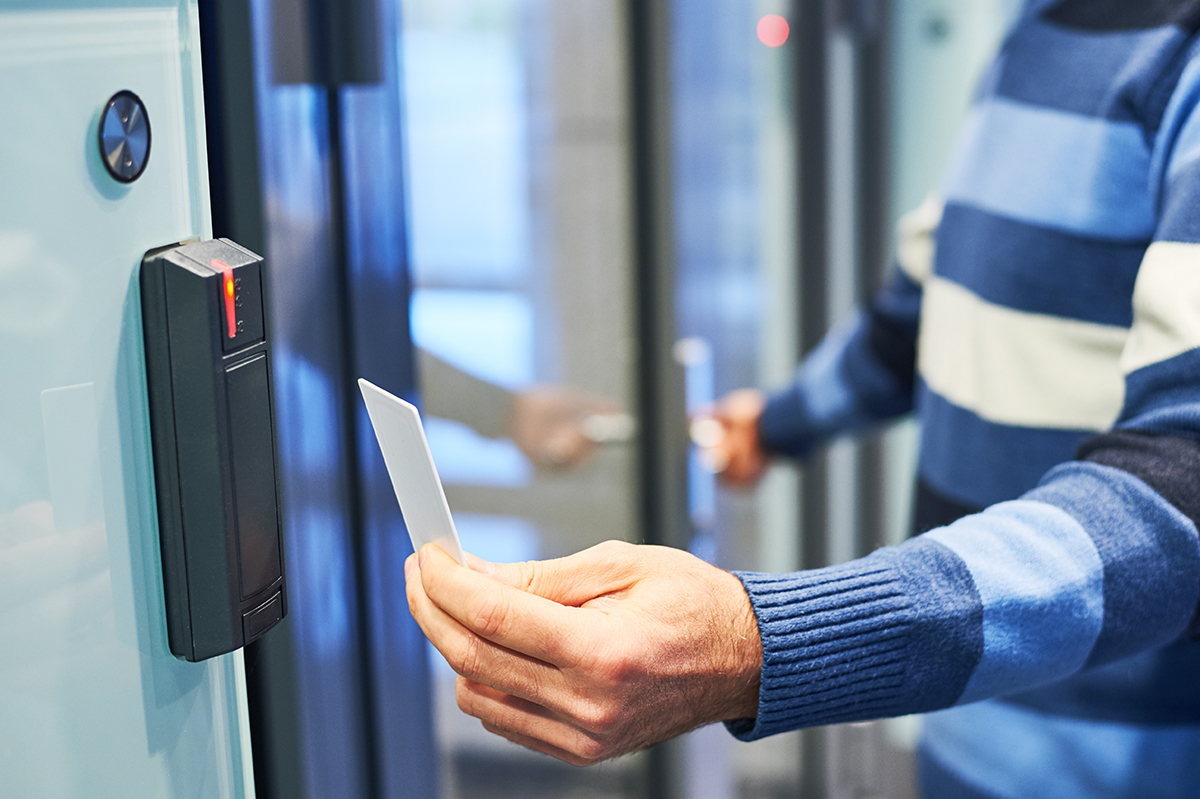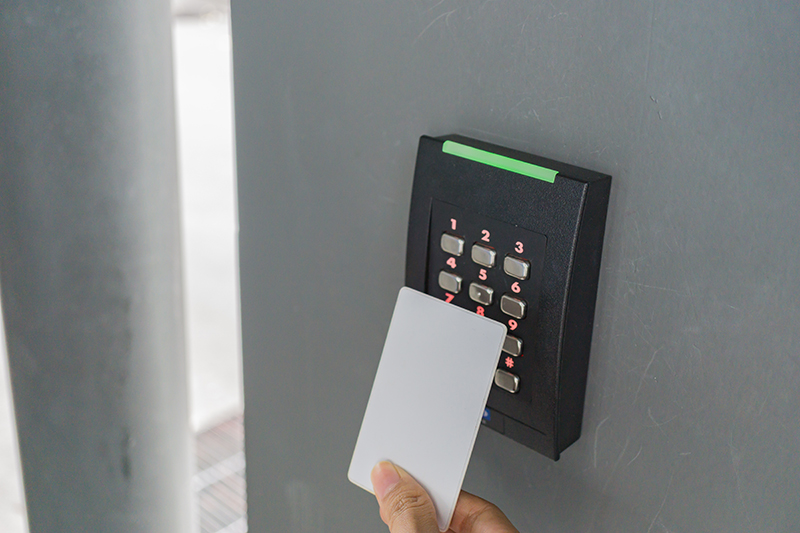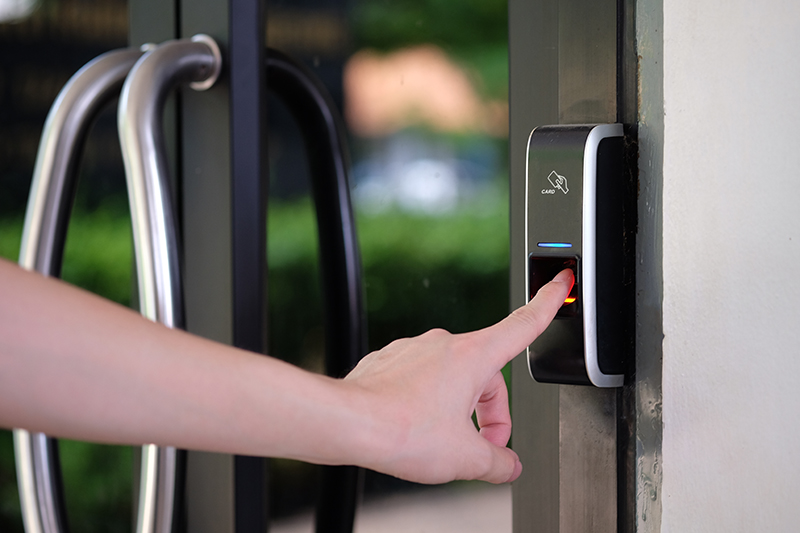Access Control

Published: Tuesday, 01 August 2023
Businesses want to know who is coming and going from their property. Having control of who is allowed where and when in your building is important to keeping your data, information, and your workers safe. This is when access control comes into play. Control who enters your property with door entry kits and maglock systems. There are a variety of systems that can be used to create an access control system. These are: proximity readers, facial recognition, biometric, keypad, standalone solution, and multi-door solution. In this article we are going to be giving you a brief overview of what these systems do and how they can help you keep your property, customers, and workers safe.
Proximity Readers
Proximity readers is a contactless card device that will allow entry into certain areas of a building once scanned. These are a great way for employees to easily access areas of a business where customers aren’t allowed to go. These should ideally be used for store/stockrooms to keep stock safe and secure. Proximity card readers are very easy to implement and are used to create what is known as ‘touchless technology’. This technology is usually designed to make your workplace a healthier place as less germs are spread from opening and closing doors.
Keypad
A keypad security system is an electronic lock which will only open once the correct input has been entered, this will vary from a 4 to 8-digit code. Keypad systems can also have added security with the implementation of a lock and level to increase security overall however, keypads can usually deter trespasses. You will usually see keypad access controls for gates, storerooms, and employee areas. This helps to keep your stock and premises safe. The risk with these is they could be hacked, also if power was to go down, they could automatically open or stay closed.

Standalone Solution
Standalone access control systems, considered to be the simplest of access control methods, usually it is one of two small units that are connected to the door panel and has no need to be on a computer network. This makes it easy to set up and it doesn’t require you to set up every door in your building, only the necessary ones to make sure only employees are able to enter the premises. These systems can include keypad, key card, and an entry system that requires calling the main building to confirm who you are.
Multi-door solution
A multi-door solution requires software and devices that allow you to control your doors and access points. You are more likely to see a multi-door access control in large commercial facilities such as apartment buildings, hotels, hospitals, university campuses and many more. These systems help to grant different entry levels for the user. The methods mainly used for a multi-door solution is usually: card-based, mobile access, biometric, PIN pads and browser access. The main issue with a multi-door solution is that the system is very complex and there is a lot of layers that could go wrong, which is something to consider when deciding between a standalone system and a multi-door solution.

Facial Recognition
Facial recognition systems have the technology to scan a user’s face through a digital image or video and will reference it back to a database of faces on your system and can confirm if they are allowed access into this specific area. The most common used facial recognition currently is from our phones. Most current generation phones come with built in facial recognition to make sure only you and other authorised faces are allowed access into your phone. Facial recognition is not very common in a commercial business front, but it was more likely to be seen in the security sector. The biggest issue with facial recognition is the use of ‘deepfakes.’ This allows the user to digitally change their face to make them look like yourselves. This could grant them access to your phone or into a building they aren’t meant to have access to.
Biometric
Biometric security systems are similar to facial recognition however, they will take everything into account. Biometric identifiers include but are not limited to fingerprint, palms veins, face recognition, DNA, palm print, hand geometry, iris recognition, retina, odour/scent, voice, shape of ears and gait. Biometrics have also been used to identify people with their behavioural characteristics which can include simple things such as mouse movement and typing rhythm. Once again, biometric security will rarely be seen in a commercial setting however, high security information that needs protecting will most likely use this. The main concern with this type of technology how far the use of this information could go, especially if it was to get leaked.

Access control are a great way to keep your premises, people, and stock safe, but it is important to make sure you have the correct system for your premises.
We hope this article has provided you insight into what each access control is used for and where it is more ideal for the systems to be used.

